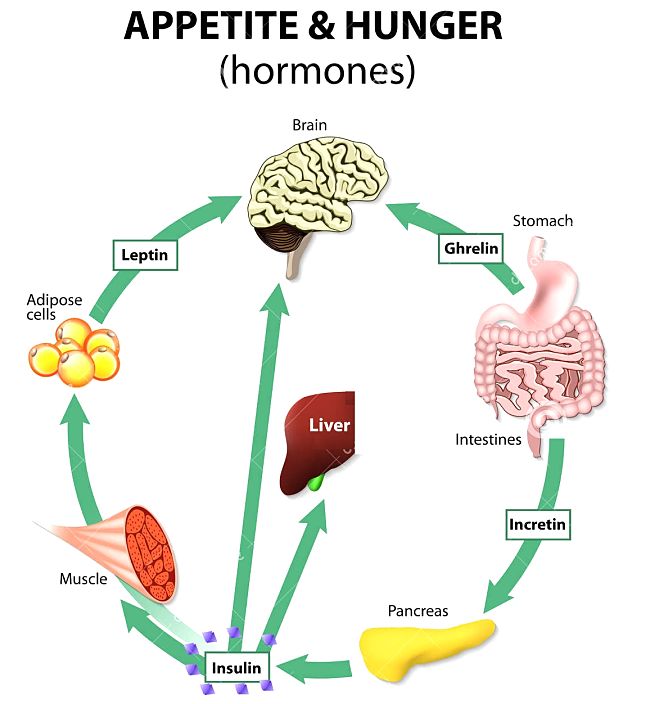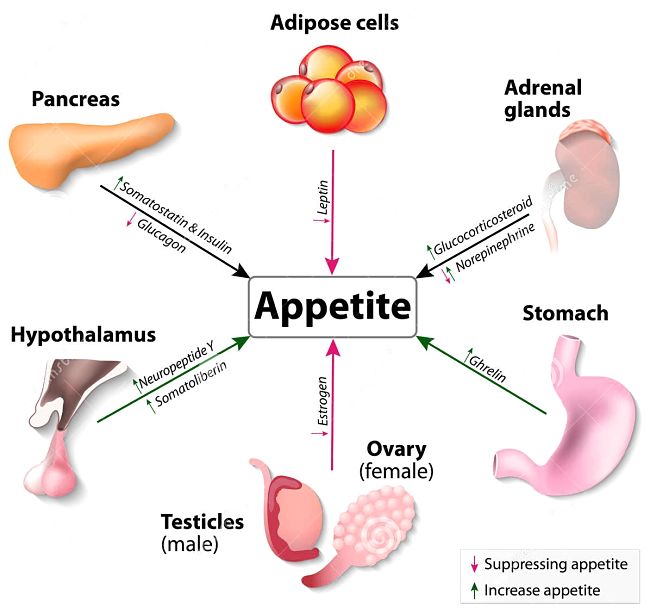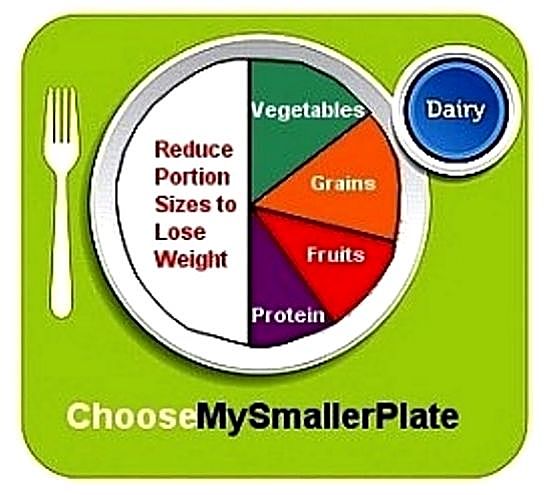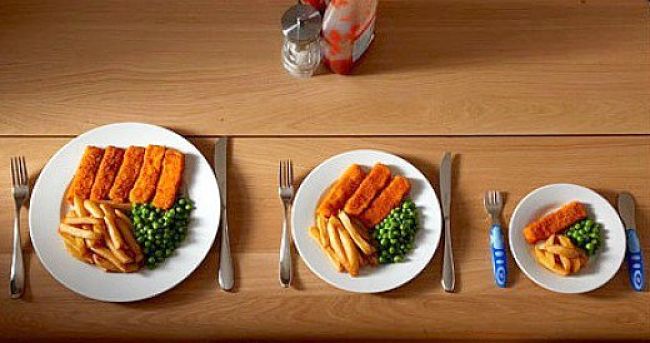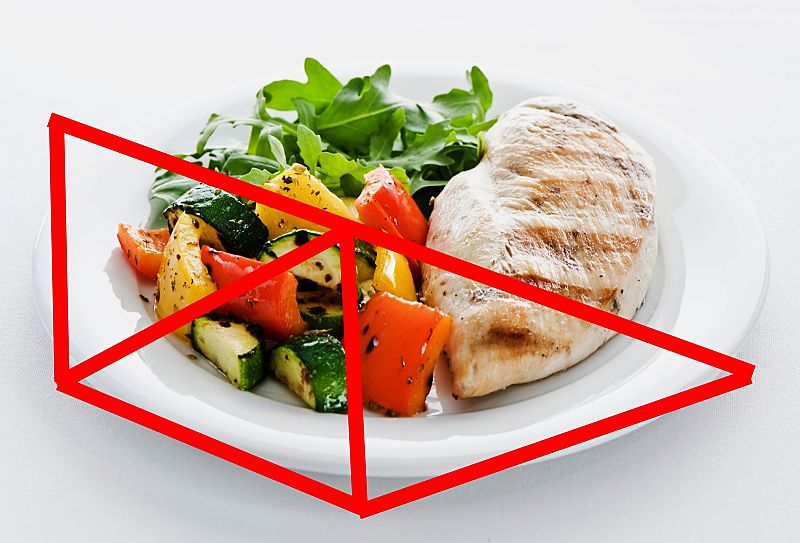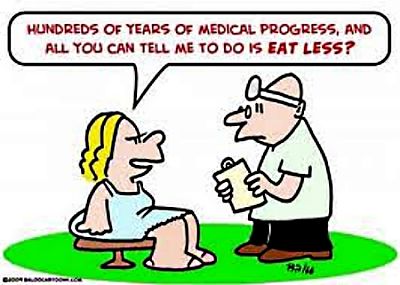How to Control Hunger and Suppress Appetite - It is Mind over Platter
Weight loss is really all in the mind. Most diets don't work because blacklisting carbs, starving or going on a high protein diets simply means that people too much of other foods. They lack the will power to stick to the rigid regime. If the lose weight they revert to their normal eating patterns and put the weight back on. Most diets aren't designed for maintenance and more than 90% of diets fail. Just about everyone is dieting but very few succeed. We all know what we shouldn't eat and what we should be eating. You know the mantra: Five serves of vegetable and two serves of fruit, mixed with small portions of lean meat, eggs, dairy, eggs, wholemeal grains, fish and nuts - that should do it. But we don't eat that way. Why? Its time to get back to basics and understand the difference between what we eat and importantly why we eat it.
People eat for all sorts of reasons other than to provide the simple food to run our bodies. We need to re-program ourselves and think of food as a fuel and only top up when the gauge shows 'empty'. Eating is pleasurable and we should enjoy and savour every mouthful when we have to eat. But we should not eat for the pleasure it provides and the way it provides relief. Eating can be a habit and something we do to have a break or relieve stress and provide comfort. It is this eating for the wrong reasons that is the cause of excess eating, weight gain and the failure of diets.
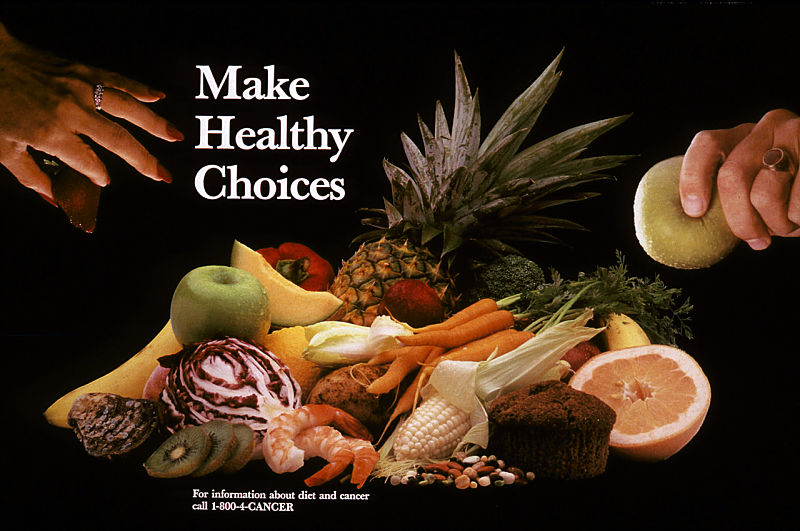
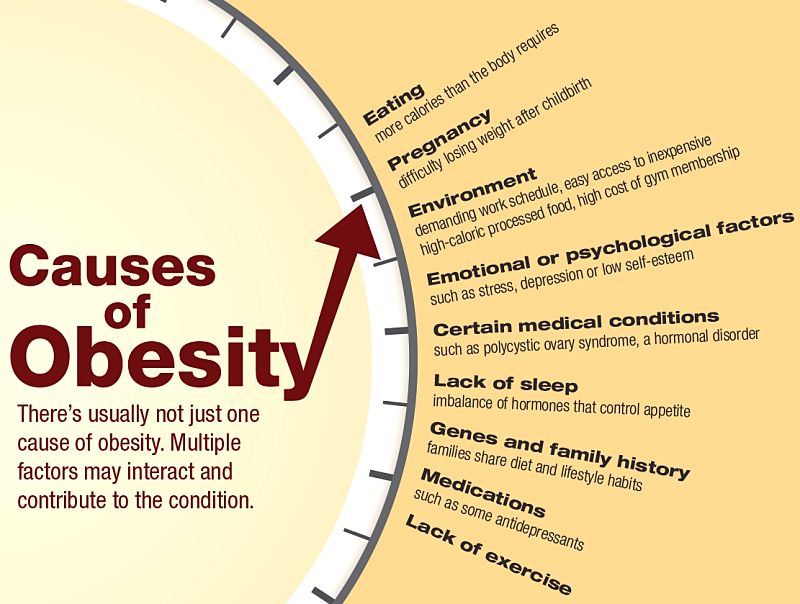
Whenever we feel hungry - its time to stop and ask ourselves what are were hungry for.
Try to understand what the hunger means. Research has shown that many people eat for a host of reasons other than to satisfy a physical hunger to sustain the body. Food and sugar cravings are more about the 'hit' we get from the sugar than the need for calories. People eat snacks when they are bored, stressed, tired or upset. They eat because it is a habit to eat during a tea break. Instead of trying to understand what they are really hungry for, they turn to food. This articles discusses how you can learn to understand the difference between appetite and hunger and learn how to satisfy your emotional hunger without using food. The basic set of questions is why do we eat, what do we eat and when do we eat.
Difference between Appetite and Hunger
The crucial first step is learn how to understand the distinction between 'appetite' and 'hunger'.
Hunger is the physical need for food.
It is defined as a physiological requirement for food due to food deprivation. More generally it can mean a strong desire for something (including food or drink)
Appetite is a feeling, a desire for, or craving for something (not necessarily) food.
It can be a desire to eat food for emotional reasons other than to satisfy a physical hunger. People who are hungry can eat far more than their physical need for food, as eating can stimulate their appetite. The look and smell of food can trigger the appetite for food even though we are not really hungry.
The desire to eat is usually dominated by our emotions rather than a physical need to food to sustain our bodies. We eat because of habits, culture, social pressure, memories, lifestyle and need for comfort. The smell, sight and taste of food may stimulate our appetites, where or not we are hungry. So, if you can learn to only eat when you are genuinely hungry this will make a huge difference to the amount of food eaten.
Making the change necessary involves really understanding what you're really hungry for and finding non-food ways of satisfying the hunger. People eat because they are bored or need a break and eating is an easy way to do it. You need to find other ways of taking a break such as going for a walk, talking with someone - anything apart from eating. People may also use food as substitute for not satisfying the underlying cause. If people crave affection, self-esteem, attention or are stressed or worried that will often eat something instead to relieve the symptoms. You need to recognise the real cause and find real solutions - not substitutes.
Tips
- Learn to recognise genuine physical hunger. Understand and learn when you are genuinely hungry and in real need of food. Only eat when you are hungry not by schedule or habit. If you have eaten something within the last two hours or so, chances are the hunger you feel is not related to the physical need for food but to other things.
- Swap high-calorie treats and snack foods for healthier versions and learn to regard fruit and nuts as the ideal snack rather than chips, cakes and biscuits. Don't stock the refrigerator or cupboard with comfort foods and snacks stuffed with sugar, fat, carbohydrates or salt. Gradually replace these items with healthier whole food substitutes. Take care of the portion sizes as even the healthy foods such as nuts have high calories.
- Learn to manage stress and anxiety without eating. Most people desire some form of comfort when we are tired or stressed, but you need to learn to stop eating comfort foods. Try to manage stress by preventing it developing or reaching the point that you lose control. Learn to overcome stress with healthful strategies, such as regular exercise and interesting activities and diversions rather than grabbing the comfort food. Much of this is breaking habits. Try to eat only when you are physically hungry and not be driven by appetite.
- Use a diary to work out what triggers your unnecessary eating and snacking - Keep records of when you eat, what you eat and why you eat it. This will help you discover your motivations for eating and will make you aware of what triggers unnecessary eating. Once you have done this you can start to change your eating patterns.
- Practice what is called mindful eating. We need to eat when we are hungry and there is no need to totally eliminate the pleasure of food. The trick is to make the most of the pleasure of food when you are genuinely hungry - to really savour every mouthful. The aim is to satisfy your hunger but not necessarily your appetite. Often people eat without even realising what they are consuming and how much they are eating. People often become distracted, whether it's work worries, the kids, stimulating conversation or watching television. When it's time to eat, make the special effort to sit down, concentrate and savour every mouthful so your really enjoy it. Eating slowly may suppress your appetite. Listen to your body and stop eating before you have eaten everything on your plate. This technique can heighten your sensations, feelings and thoughts connected with food and eating. Make it really special The idea is to make a distinction between mindful eating to enjoy satisfying your hunger and mind-less overeating triggered by being anxious, bored or needing a break by eating comfort food.
Controlled and Disturbed Eating Patterns - What are the Differences?
The images below highlight the differences
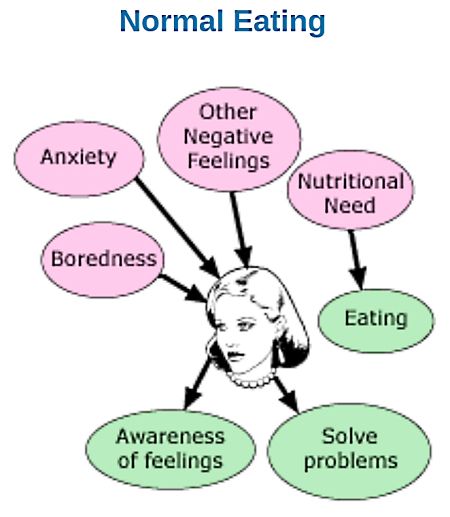
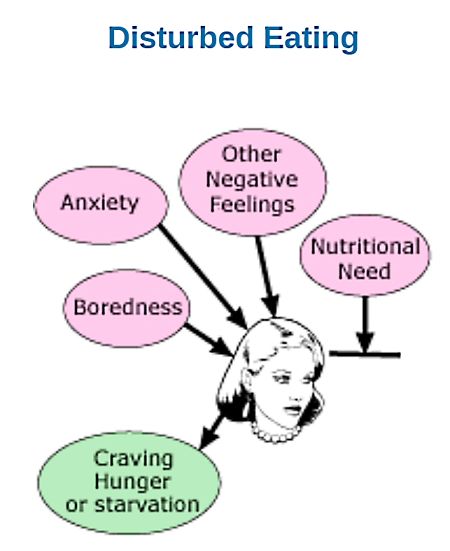
What Controls Eating - Normal and Disturbed Patterns?
Disturbed - People lack the normal link between what the body needs in terms of nutrition and the hunger and appetite signals. Eating is determined by will, or lack of it, and the temptation to eat comfort foods, eat for pleasure, or because you are bored, tired and need a lift.
Normal - Healthy people eat when they are truly hungry with the 'when' and 'how much' driven by appetite and satisfaction. You eat when you need nourishment and energy. You stop eating when you are satisfied or know you have had enough.
Why a Person Eats - Normal and Disturbed Patterns?
Disturbed - For people with eating disorders, their eating is governed by the desire or ambition to change how they look, or to reduce stress, anxiety, pain, tiredness, loneliness, monotony, boredom etc. Often after finishing a meal, they feel guilt, discomfort, remorse and shame. They know that their eating has been inappropriate for the wrong reason. This only increases their anxiety.
Normal - A healthy person eats for nourishment, energy, vitality and good health. Sometimes, they eat for pleasure or relish food during a shared social event. They enjoy food and eating, but they know when they have had enough. Their driver is good nice food not food as a drug to relieve their suffering. These people feel content when they eat the good stuff. They have contact and connection with their body's physical sensations of hunger, appetite, satiation and satisfaction. They use hunger and appetite sensibly to know when and how much to eat. These people are satisfied with eating as an essential process like breathing and sleeping, without denying them the pleasure that eating good food brings.
When a Person Eats - Normal and Disturbed Patterns?
Disturbed - A person with an eating disorder eats chaotically, irregularly with poor control about when they eat. Mostly they eat too much for comfort reasons, but sometimes they eat too little, only to binge when will-power fails. Sometimes they skip meal, or they stuff food down in a rush. Often they eat too fast and do not allow their hunger and appetite responses to catch up and respond to the food. Snacking is a habit and people feel they need to eat every 30 minutes or an hour after their meals. The feel the need to have full stomachs all the time.
Normal - A normal healthy person eats regularly and maintain a regular eating pattern, such as three main courses. They may have small snacks between meals when body craves nourishment and they have hunger pangs, but they keep the snacking under control and do so only when needed.
Summary
=> Disturbed Eating
Either you cannot sense the body's signals for hunger, appetite and satisfaction, satiation, or you disregard them. In either situation, you eat for reasons other than the need of nourishment, energy and vitality. You may eat because you are stressed, anxious or sad, or you feel a need for the comfort of eating until your stomach is full. Many disturb eaters are unhappy with their eating patterns and their diet, but their cannot resolve these problems in a sensible way. They don't know how or lack the will to make long term significant changes to diet and eating patterns.
=> Normal Eating
You have a strong connection with your body's physical sensations of hunger, appetite, satiation and satisfaction and use them to control your eating. You use these signals to decide when and how much to eat and when to stop. You normally only eat when you are hungry and need nourishment, not when you are anxious or 'need a hit'. You get satisfied with eating which you regard as a regular bodily function like breathing and sleeping. You enjoy food and the pleasure of food, but you know when to stop and how to make sensible choices at parties and social occasions such as shared dinners with friends.
